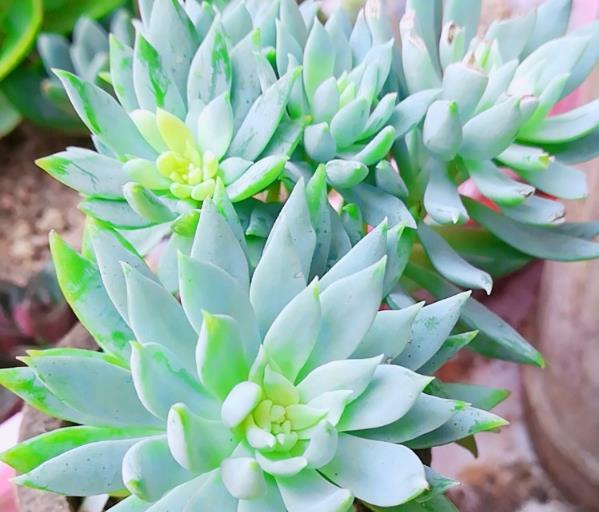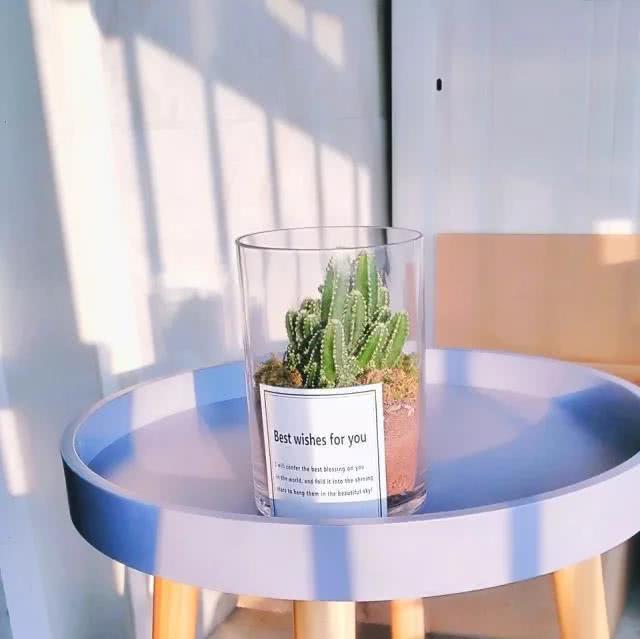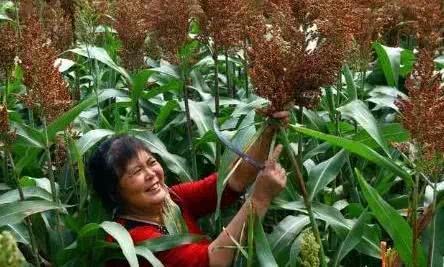What does it mean to be a succulent plant? It is very different from leaf cutting reproduction to understand.

Succulent plants are succulent plants that reproduce directly from seeds. It includes sown seedlings, wild seedlings and transplanted seedlings with the above two kinds. Seedlings belong to seedlings obtained by sexual reproduction, which are different from leaf cuttings, cuttings and grafted seedlings obtained by asexual reproduction. Tissue culture is a means of seedling cultivation. Tissue culture seedlings are seedlings under tissue culture conditions, which can be obtained from plant stem culture or seed germination. A seedling is a seedling obtained from seed germination. Therefore, if the seeds are sown directly under tissue culture, the seedlings obtained are tissue culture seedlings and seedlings.
Succulent plant sowing is generally carried out in October in autumn, the method is the same as apricot sowing, before sowing need to prepare seeds, sowing soil, pots, plastic wrap, carbendazim. The drainage holes of the basin are paved with gauze, the sowing soil is loaded into the basin, and the soil is shaken slightly to flatten the soil. Don't fill it up, leave 3CM height space on top. Sprinkle the seeds into the soil. I usually pinch them by hand. I can also fold them in paper and sprinkle them gently. It is good to sprinkle them evenly as much as possible. Seal with plastic wrap, remember to keep 1-2 small gaps for ventilation, not closed. Then place it in scattered light, avoiding direct sunlight.
Succulent plants in addition to seed reproduction, but also by leaf cuttings, cuttings, and other ways of reproduction. Multi-fleshy leaf insertion is an interesting thing, probably everyone who comes into contact with too many fleshy plants, more or less have done such things, interesting and magical, and leaf insertion seedlings are especially easy to come out of state, especially when there is a certain amount of light, some flower friends said, why leaf insertion leaves two days black? The leaves of the leaf insert will turn black or turn into water in two days. Generally speaking, there are two reasons. One is that the leaves themselves have problems. For example, the plant itself has diseases that have already been reflected, such as black rot, black spot disease, and the leaves turning into water. At this time, the broken leaves may look normal, but they are actually working with diseases. In two days, they turn into water or black.
Another reason is that succulent leaves, which are otherwise fine, are contaminated. The leaves that have just been broken off are wounded and easily infected. If the wound, that is, the position of the growth point of the leaf base, is not dried, it is possible to put the soil surface directly into contact with water or other germs, especially in a hot and humid environment. Therefore, it is better to ventilate and dry the leaves for three or four days to a week after breaking them off, and then put them on the soil surface; or after breaking off the leaves and putting them on the soil surface, the soil surface should not be too wet, the growth point should not contact water, and the leaves should not be exposed to the sun during the insertion period.
The fleshy leaves that have just been broken off are easy to cause bacterial infection due to the wound caused by tearing. In severe cases, the leaves may turn black, and in light cases, the growth point may be damaged and the leaves cannot be inserted. Just like human skin, when it was good, it was fine. If it was broken and not treated, even if it could only be exposed to the air, it might become inflamed and grow pus. Just torn off the leaves to dry for a few days, equivalent to let the wound heal, do not dry directly put the soil surface watering, is like letting their wounds directly contact the source of pollution. Therefore, the leaves are usually broken down in a cool and ventilated place for three or four days to a week and then flat soil leaf insertion, the form of drying is also very simple, take a plate or box to hold, put in a cool and ventilated place can be.
Succulent plant leaves insert, can water go up to the leaf? When the fleshy leaves are inserted, the pot soil is dry, and watering or occasionally spraying water can increase the humidity around the leaves and stimulate their rooting. However, sometimes it is generally recommended not to get on the leaves when watering and spraying, so as not to infect the water. There is no mistake in logic, but the risk is exaggerated. It is like getting caught in the rain may catch a cold, but most of the time it will not catch a cold, especially if it rains a little and the body is healthy. Occasionally watering, spraying water, nothing, but if the environment is hot, pot soil and long-term moisture (conducive to fungal bacteria reproduction), the risk of leaf accidents will also become greater.
This is a gathering place for succulent plant lovers to share succulent conservation skills. Welcome to pay attention to communication.
- Prev

If you want to grow flowers, you don't know what to choose. These goods are both good-looking and easy to maintain.
In his prose "slow look", long Yingtai said, "I want to have a home. There is soil in front of the home. Towel gourd can be planted on the soil. Towel gourd climbs along the pole and blossoms into huge yellow flowers in front of the light." A good life is everyone's inner yearning, but a fast-paced life.
- Next

Sorghum, which used to be one of the grains, is now rarely planted. Does it taste bad?
Sorghum belongs to the chestnut in the grain "millet, bean, hemp, wheat and rice". It has been the main food crop in China for a long time, but with the continuous development of science and technology, the breeding of high-yield varieties of wheat, corn and rice, and chemical fertilizer industry.
Related
- Wuhan Hospital Iron Tree Blooming Result Was Instantly Frightened by the Gardener Master
- Which variety of camellia is the most fragrant and best? Which one do you like best?
- What is the small blue coat, the breeding methods and matters needing attention of the succulent plant
- Dormancy time and maintenance management of succulent plants during dormancy
- Minas succulent how to raise, Minas succulent plant pictures
- What are the varieties of winter succulent plants
- How to raise succulent plants in twelve rolls? let's take a look at some experience of breeding twelve rolls.
- Attention should be paid to water control for succulent plants during dormant period (winter and summer)
- Watering experience of twelve rolls of succulent plants
- Techniques for fertilizing succulent plants. An article will let you know how to fertilize succulent plants.

